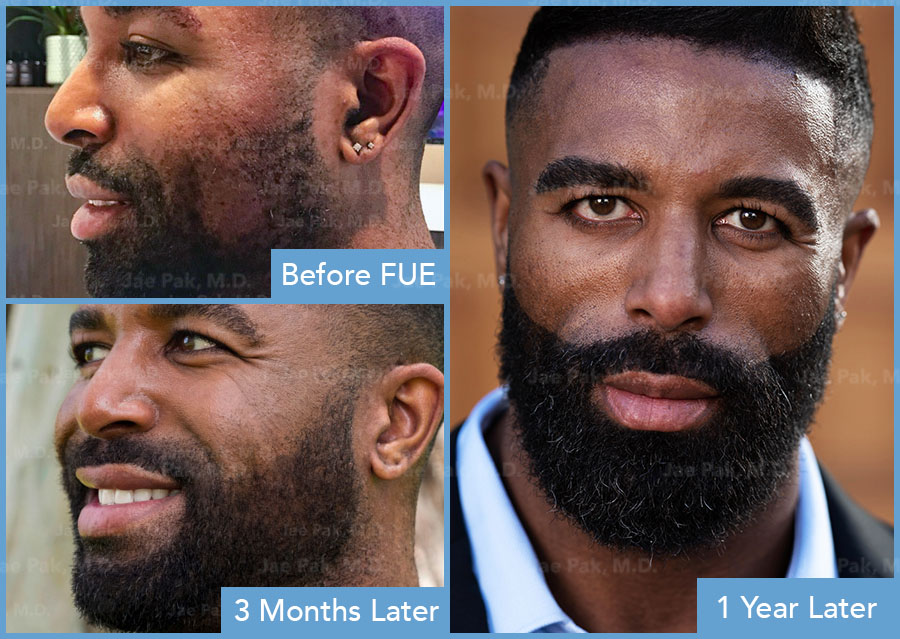Beard Transplant Results: Achieving Natural, Coveted Facial Hair
– Beard transplant is a surgical procedure to enhance the appearance and density of beards.
– Factors such as genetics and hormonal levels can affect beard growth.
– The procedure involves removing hair follicles from the patient’s head and transplanting them to the face.
– There are two primary methods used in beard transplants: FUE and DHI.
– FUE involves individual extraction of hair follicles and making small incisions in the beard area for implantation.
– DHI uses a special tool called a “Choi pen” for simultaneous extraction and implantation of follicles.
– Beard transplant can fill in sparse areas and create a fuller, more even look.
– The results of a beard transplant are generally permanent.
– Common side effects include swelling, bruising, redness, pain, discomfort, and itching.
– Three days post-procedure, small scabs around each transplanted follicle begin to heal
– Two to three months post-procedure, transplanted follicles enter the growth phase
– Regrowing hairs may initially be thin but eventually thicken and strengthen
– After one year, the final results of the procedure become apparent
– The transplanted follicles should have healed, and new hair should have grown, fallen out, and regrown
– Beard density and coverage should significantly improve after one year
– Selecting a skilled beard transplant surgeon is important for success
– Dr. Cinik is mentioned as a skilled surgeon in beard transplants
– Proper preparation before the procedure is crucial for a successful outcome
– Post-operative care instructions from the surgeon should be followed for optimal recovery
– Hair regrowth after a beard transplant takes time, gradual improvements should be expected over months.
– Recovery from beard transplant surgery takes time and patients need to be aware of the timeline.
– Patients can return to work 2 to 3 days after the procedure, but a week’s rest is usually advised.
– It takes about 2 weeks for the grafts on the face to take root.
– Side effects during recovery include scabbing, itchiness, redness, and swelling, which can take a few days to a couple of weeks to go away.
– Patients will have dried blood crusts on the face and the donor area on the back of the head will be bandaged for a few days post-surgery.
– Two days after the procedure, patients can start washing their beard and donor areas using provided foam and shampoo.
– Soft foods are recommended for about 3 days to prevent pain, and salty foods should be avoided to reduce swelling.
– Scabs will form on the face but should fall off after 2 weeks.
– One month after surgery, beard hair may fall off due to “shock loss” but this is temporary.
– Acne and bumps on the face may also occur but will go away with time.
– By the 1-month mark, most routine activities can be resumed.
– Beard hair growth is typically noticeable around 3 months after a beard transplant surgery.
– At 6 months post-surgery, around 70% of the beard hair will have grown and become thicker.
– It takes around 12-18 months for most people to see the final results of their beard transplant, but it can vary depending on individual healing.
– The results of a beard transplant will appear natural and eliminate patchiness.
– Rest is necessary after the surgery, but the downtime is not extensive.
– It is essential to follow the aftercare instructions given by the surgeon for optimal results.
– If any issues arise during beard transplant recovery, contacting the doctor promptly is advised.

